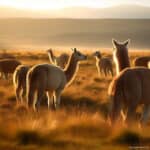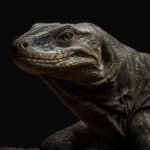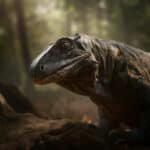Komodo dragons are fascinating creatures that have captured the imagination of people around the world. With their imposing size, powerful jaws, and unique appearance, they are often associated with the ancient and mysterious world of dinosaurs. In this article, we will explore the question: Are komodo dragons dinosaurs? We will delve into the similarities and differences between these two groups of reptiles, examining their evolutionary history, physical characteristics, and behavior. By the end, you will have a better understanding of the relationship between komodo dragons and dinosaurs, and whether or not these incredible creatures can truly be considered modern-day dinosaurs. So, let’s embark on this journey to unravel the truth behind the fascinating world of komodo dragons and dinosaurs.
Key Takeaways
- Komodo dragons are not dinosaurs; they are a species of lizard.
- Dinosaurs went extinct millions of years ago, while komodo dragons are still alive today.
- Komodo dragons are the largest living lizards and are native to the Indonesian islands.
Understanding Komodo Dragons
A. The Origin and Habitat of Komodo Dragons
Komodo dragons are fascinating creatures that have captured the imagination of people around the world. While they may resemble dinosaurs in some ways, they are not actually classified as dinosaurs. Let’s explore the origin and habitat of these incredible reptiles.
Komodo dragons, scientifically known as Varanus komodoensis, are native to the Indonesian islands of Komodo, Rinca, Flores, Gili Motang, and Padar. These islands are part of the Lesser Sunda chain, located in Southeast Asia. The warm and tropical climate of this region provides the perfect habitat for these reptiles to thrive.
These ancient creatures have a long history that dates back millions of years. They are believed to have evolved from a group of monitor lizards that lived during the dinosaur era. While they share some similarities with dinosaurs, such as their scaly skin and reptilian nature, they are not direct descendants of these prehistoric animals.
B. Physical Characteristics of Komodo Dragons
Komodo dragons are the largest living lizards on Earth, and their physical characteristics are truly remarkable. Let’s take a closer look at what sets them apart.
Size: Adult Komodo dragons can reach lengths of up to 10 feet and weigh around 150 pounds. Their size makes them formidable predators in their ecosystem.
Scales: Like other reptile species, Komodo dragons have scaly skin that provides protection and helps regulate their body temperature. Their scales are rough and bumpy, giving them a unique appearance.
Coloration: These reptiles have a range of colors, including gray, brown, and green. Their coloration helps them blend into their natural surroundings, making it easier for them to hunt and avoid predators.
Teeth and Jaws: Komodo dragons have sharp, serrated teeth that are perfectly adapted for tearing through flesh. Their jaws are incredibly powerful, allowing them to deliver a deadly bite to their prey.
C. Behavior and Lifestyle of Komodo Dragons
Komodo dragons are solitary creatures that spend most of their time hunting and resting. Let’s delve into their behavior and lifestyle to gain a better understanding of these fascinating reptiles.
Hunting: Komodo dragons are apex predators, meaning they are at the top of the food chain in their ecosystem. They primarily feed on large mammals, such as deer and wild boar, but they are also known to eat smaller prey, including birds and reptiles. Their hunting technique involves ambushing their prey and delivering a powerful bite, often causing fatal injuries.
Reproduction: Female Komodo dragons lay their eggs in nests they dig in the ground. After a gestation period of around 8 months, they lay a clutch of up to 30 eggs. The female guards the nest until the eggs hatch, which takes approximately 7 to 8 months. The hatchlings are vulnerable and face numerous threats from predators.
Lifespan: Komodo dragons have an average lifespan of around 30 years in the wild. However, in captivity, they can live up to 50 years or more, thanks to the controlled environment and access to proper nutrition and veterinary care.
In conclusion, while Komodo dragons may share some similarities with dinosaurs, they are not classified as such. These incredible reptiles have a rich history and unique characteristics that make them truly fascinating. Understanding their origin, habitat, physical characteristics, and behavior allows us to appreciate the wonders of the natural world and the diverse creatures that inhabit it.
The World of Dinosaurs
Dinosaurs have long captivated our imagination with their colossal size and mysterious existence. In this section, we will delve into what defines a dinosaur, explore the era in which they thrived, and discuss their eventual extinction.
A. What Defines a Dinosaur?
Dinosaurs are a group of reptile species that roamed the Earth millions of years ago. They are distinct from other reptiles due to several defining characteristics. Here are some key features that set dinosaurs apart:
-
Upright posture: Dinosaurs walked on two legs, a trait known as bipedalism. This allowed them to have a more efficient gait and freed their forelimbs for other purposes.
-
Scales: Dinosaurs had scaly skin, similar to modern reptiles. These scales provided protection and helped regulate body temperature.
-
Egg-laying: Like their reptilian relatives, dinosaurs laid eggs. Fossilized dinosaur eggs have been discovered, shedding light on their reproductive habits.
-
Evolutionary adaptations: Dinosaurs evolved a wide range of adaptations, such as specialized teeth for different diets, unique skeletal structures, and various locomotion strategies.
B. The Era of Dinosaurs: Mesozoic Era
The Mesozoic Era, often referred to as the “Age of Dinosaurs,” spanned from approximately 252 to 66 million years ago. It is divided into three periods: the Triassic, Jurassic, and Cretaceous. During this time, dinosaurs dominated the land, sea, and sky.
-
Triassic Period: The Triassic Period marked the beginning of the Mesozoic Era, around 252 million years ago. It was a time of great diversification, with the emergence of early dinosaur species. However, dinosaurs were not yet the dominant terrestrial creatures.
-
Jurassic Period: The Jurassic Period, which followed the Triassic, witnessed the rise of iconic dinosaurs such as the mighty Brachiosaurus and the fearsome Allosaurus. This period is also famous for the appearance of the first birds.
-
Cretaceous Period: The Cretaceous Period, the final chapter of the Mesozoic Era, saw the peak of dinosaur diversity. It was during this time that enormous herbivores like Triceratops and long-necked giants like Diplodocus roamed the Earth.
C. The Extinction of Dinosaurs
The extinction of dinosaurs is a topic that has fascinated scientists and the general public alike. While the exact cause of their demise remains a subject of ongoing research, the prevailing theory is that a catastrophic event occurred around 66 million years ago.
-
The Impact Theory: The most widely accepted theory suggests that a massive asteroid or comet impact triggered the extinction event. This event, known as the Chicxulub impact, is believed to have caused widespread devastation, including wildfires, tsunamis, and a global climate change.
-
Other Factors: While the impact theory is the leading explanation, other factors may have contributed to the extinction. These include volcanic activity, climate change, and the gradual decline of dinosaur populations due to competition and evolutionary pressures.
Despite the extinction of dinosaurs, their legacy lives on. Modern birds are considered the direct descendants of certain dinosaur groups, showcasing the remarkable evolutionary journey that began millions of years ago.
In the next section, we will explore the fascinating world of Komodo dragons and examine their relationship to dinosaurs. Stay tuned!
Comparing Komodo Dragons and Dinosaurs
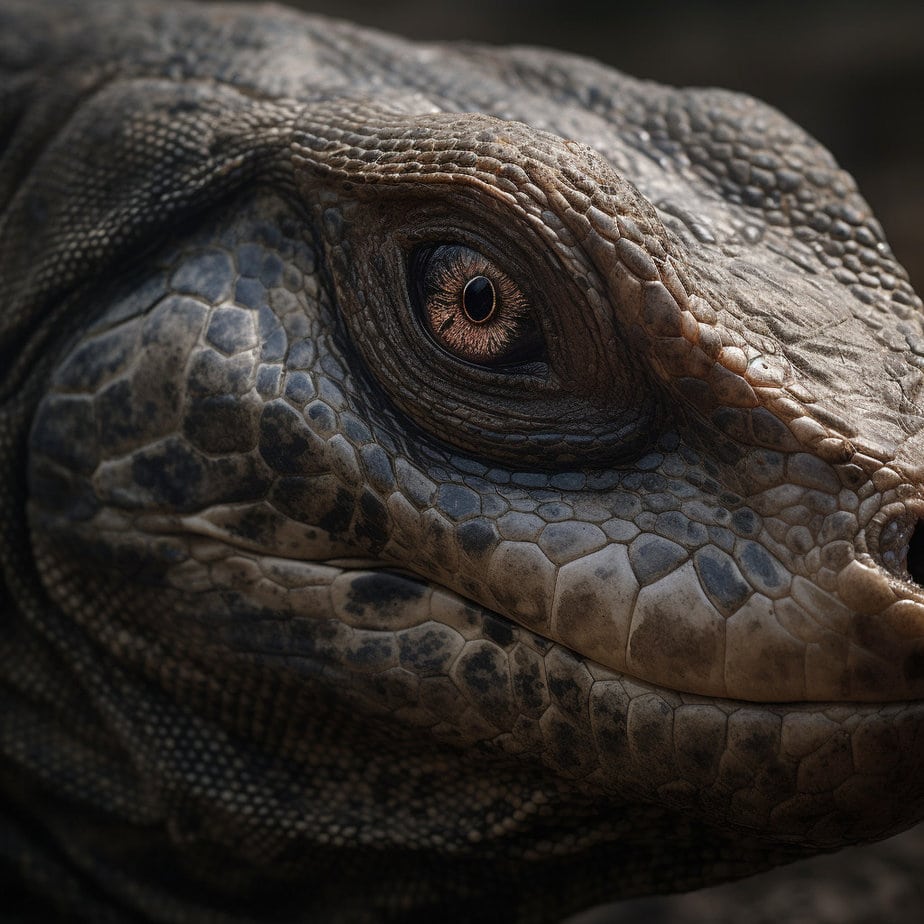
A. Similarities in Physical Features
When it comes to physical features, there are some striking similarities between komodo dragons and dinosaurs. These similarities provide fascinating insights into the evolution of these incredible creatures.
-
Reptile Species: Both komodo dragons and dinosaurs belong to the reptile family. This means they share certain characteristics, such as scaly skin and the ability to lay eggs.
-
Prehistoric Animals: Dinosaurs are known for their existence during the Mesozoic Era, millions of years ago. Similarly, komodo dragons have a long history, dating back to the Pleistocene epoch, making them ancient creatures in their own right.
-
Size and Scale: While komodo dragons may not reach the colossal sizes of some dinosaurs, they are still impressive in their own right. Komodo dragons can grow up to 10 feet in length and weigh around 150 pounds, making them the largest living lizards on Earth. This size comparison to dinosaurs gives us a glimpse into the grandeur of these prehistoric creatures.
B. Shared Behaviors and Lifestyles
Beyond physical features, komodo dragons and dinosaurs also share certain behaviors and lifestyles. These similarities provide clues about how these creatures interacted with their environments.
-
Carnivorous Diet: Both komodo dragons and some dinosaurs were carnivorous, meaning they primarily fed on meat. Komodo dragons are known to hunt and devour a variety of prey, including deer, pigs, and even smaller komodo dragons. Similarly, many dinosaurs were apex predators, preying on other animals to sustain themselves.
-
Hunting Techniques: Komodo dragons and some dinosaurs utilized similar hunting techniques. Both relied on their strong jaws and sharp teeth to capture and kill their prey. Additionally, they both employed stealth and ambush tactics to surprise their unsuspecting victims.
-
Social Behavior: Komodo dragons exhibit certain social behaviors that are reminiscent of some dinosaur species. They are known to live in small groups or colonies, with dominant individuals establishing their territories. This social structure mirrors the behavior observed in some dinosaur species, suggesting a shared evolutionary trait.
C. Evolutionary Connections
While komodo dragons and dinosaurs are not directly related, they do share an evolutionary connection. Understanding this connection helps us appreciate the intricate web of life on our planet.
-
Dinosaur Descendants: Komodo dragons are descendants of ancient reptiles that lived alongside dinosaurs. They belong to a group of reptiles known as Varanidae, which includes other monitor lizards. This lineage can be traced back to the same reptilian ancestors as dinosaurs, making them distant relatives.
-
Evolution of Komodo Dragons: Over millions of years, komodo dragons evolved from their reptilian ancestors, adapting to their unique island habitat. This evolution allowed them to develop their distinctive features and become the formidable predators we know today.
-
Dinosaur Extinction: While dinosaurs went extinct millions of years ago, komodo dragons managed to survive and thrive. Their ability to adapt to changing environments and their resilience as a species have allowed them to persist until the present day.
In conclusion, while komodo dragons are not dinosaurs, they share fascinating similarities in physical features, behaviors, and evolutionary connections. Studying these similarities provides valuable insights into the ancient world and the intricate tapestry of life on Earth.
Debunking the Myth: Are Komodo Dragons Dinosaurs?
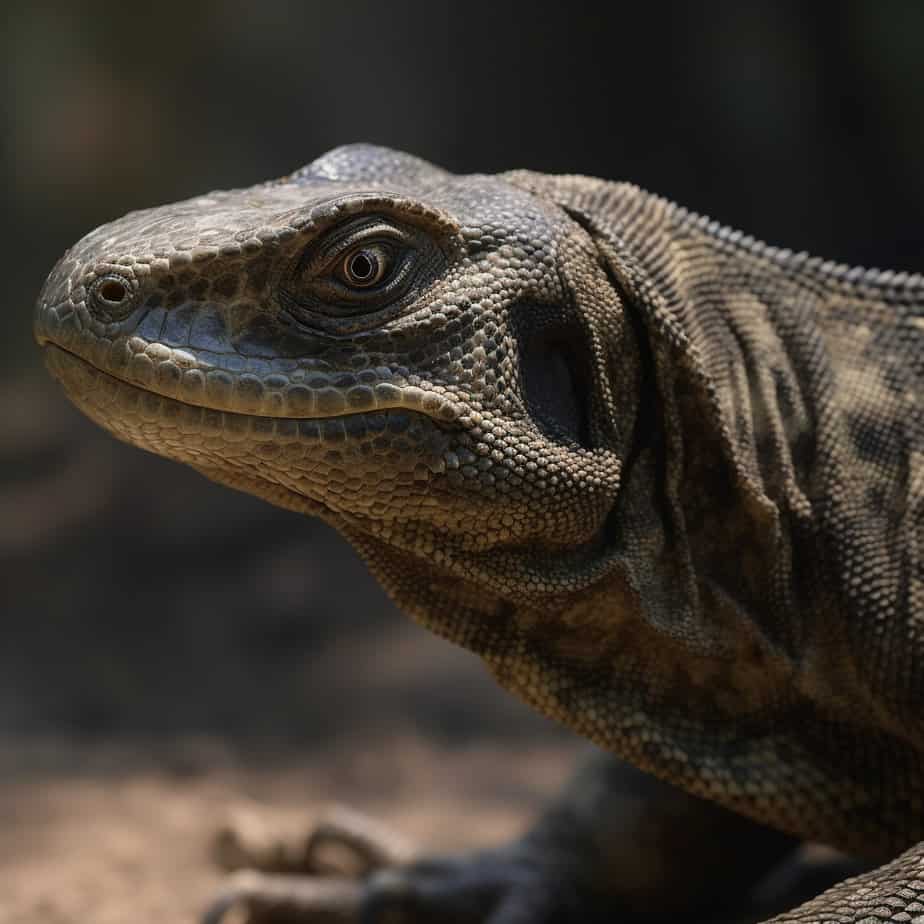
A. Scientific Classification of Komodo Dragons
Komodo dragons, scientifically known as Varanus komodoensis, are fascinating reptiles that have captured the imagination of many. While they may share some similarities with dinosaurs, they are not classified as dinosaurs. Let’s delve into the scientific classification of komodo dragons to understand their true nature.
Komodo dragons belong to the family Varanidae, which includes monitor lizards. They are the largest living lizards on Earth, growing up to 10 feet in length and weighing around 150 pounds. These reptiles are endemic to the Indonesian islands of Komodo, Rinca, Flores, Gili Motang, and Padar.
Here is a breakdown of the scientific classification of komodo dragons:
- Kingdom: Animalia (Animals)
- Phylum: Chordata (Chordates)
- Class: Reptilia (Reptiles)
- Order: Squamata (Scaled reptiles)
- Family: Varanidae (Monitor lizards)
- Genus: Varanus (True monitors)
- Species: Varanus komodoensis (Komodo dragon)
As we can see, komodo dragons are classified as reptiles and specifically as monitor lizards. While they may have some physical characteristics that resemble dinosaurs, they are not direct descendants or members of the dinosaur family.
B. Evolutionary Differences Between Komodo Dragons and Dinosaurs
To understand the evolutionary differences between komodo dragons and dinosaurs, we need to explore the timeline of their existence. Dinosaurs roamed the Earth during the Mesozoic Era, which spanned from approximately 252 to 66 million years ago. On the other hand, komodo dragons emerged much later in the evolutionary timeline.
Komodo dragons first appeared around 4 million years ago during the Pleistocene epoch. They are considered a relatively young species compared to dinosaurs. While dinosaurs were a diverse group of reptiles that included various species and sizes, komodo dragons are a single species with distinct characteristics.
One significant difference between komodo dragons and dinosaurs is their size. Dinosaurs ranged from small, bird-like creatures to massive giants like the Tyrannosaurus rex. In contrast, komodo dragons are large but not as massive as some of the largest dinosaurs. Additionally, komodo dragons are quadrupedal, meaning they walk on all fours, while some dinosaurs were bipedal, walking on two legs.
C. The Impact of Popular Culture on Misconceptions
The misconception that komodo dragons are dinosaurs can be attributed, in part, to popular culture. Movies, books, and documentaries often depict komodo dragons as fierce, prehistoric creatures, fueling the belief that they are somehow related to dinosaurs.
The physical appearance of komodo dragons, with their scaly skin, sharp teeth, and powerful jaws, may also contribute to the misconception. Their ability to take down large prey, including deer and water buffalo, further adds to their dinosaur-like image.
However, it is important to separate fact from fiction. While komodo dragons are impressive predators, they are not dinosaurs. They are a unique species of monitor lizard that has evolved over millions of years to adapt to their environment.
In conclusion, komodo dragons are not dinosaurs. They are a distinct species of monitor lizard that has captured our fascination due to their size, strength, and unique characteristics. By understanding their scientific classification and evolutionary timeline, we can appreciate these remarkable reptiles for what they truly are.
The Importance of Correct Classification in Biology
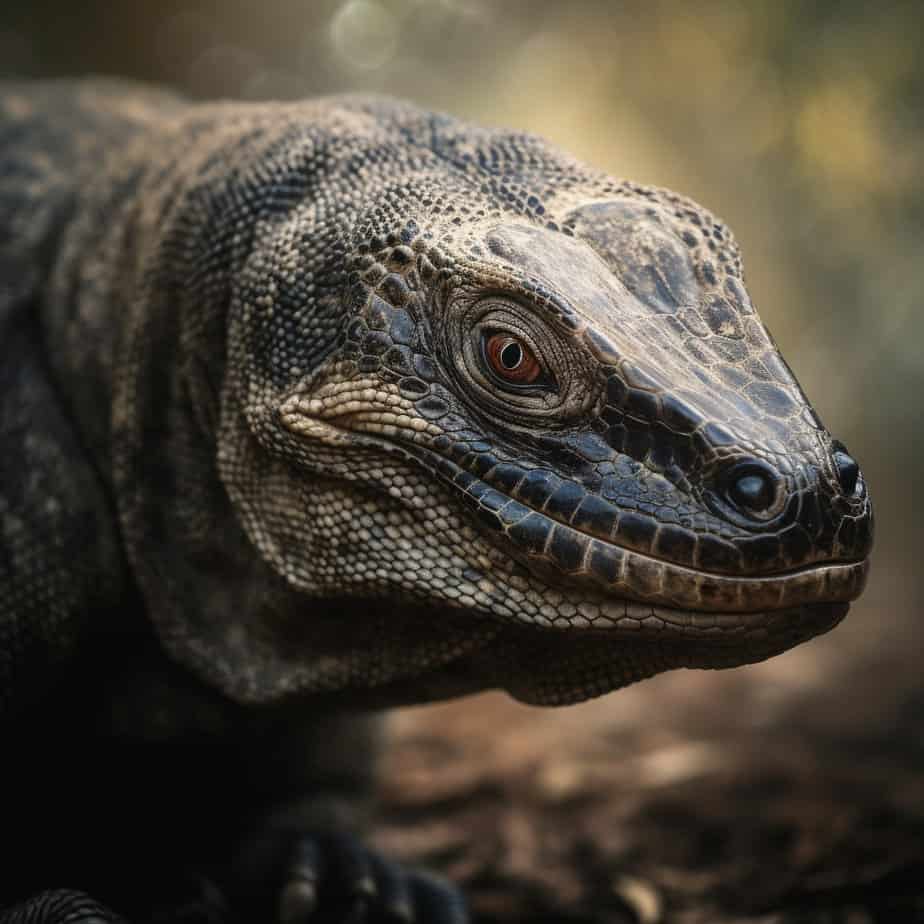
A. The Role of Taxonomy in Understanding Species
Taxonomy, the science of classifying organisms, plays a crucial role in our understanding of the natural world. By categorizing and organizing species into groups based on their characteristics, taxonomy provides a framework for studying and comprehending the vast diversity of life on Earth.
One of the primary goals of taxonomy is to establish relationships between different species. This allows scientists to determine how organisms are related to one another and how they have evolved over time. By examining the similarities and differences between species, taxonomists can uncover valuable insights into the evolutionary history of organisms.
Taxonomy also helps in identifying and naming new species. When a new organism is discovered, taxonomists carefully analyze its characteristics and compare them to existing species. This process ensures that each species is given a unique scientific name, enabling researchers from around the world to communicate effectively about specific organisms.
B. The Impact of Misclassification on Conservation Efforts
Misclassification of species can have significant implications for conservation efforts. When species are misidentified or incorrectly classified, it can lead to misunderstandings about their ecological roles, distribution, and population status. This, in turn, can hinder effective conservation strategies.
For example, consider the case of the Komodo dragon. While it is often mistakenly believed to be a dinosaur, it is actually a reptile species that belongs to the family Varanidae. Misconceptions about the Komodo dragon‘s classification can lead to misconceptions about its conservation needs.
Accurate classification is essential for understanding the habitat requirements, behavior, and population dynamics of species. It allows conservationists to develop targeted conservation plans that address the specific needs of each species. Misclassification can result in inadequate protection measures or the misallocation of resources, ultimately putting species at risk.
C. The Role of Education in Dispelling Myths
Education plays a vital role in dispelling myths and misconceptions surrounding species classification. By providing accurate information about the classification of organisms, educators can help the public develop a better understanding of the natural world.
In the case of the Komodo dragon, educating the public about its classification as a reptile species rather than a dinosaur can help debunk the misconception that it is a living dinosaur. By explaining the key differences between dinosaurs and reptiles, such as their evolutionary history and physical characteristics, educators can help individuals differentiate between the two groups.
Furthermore, education can foster a sense of appreciation and respect for the diversity of life on Earth. By learning about the evolutionary relationships between different species, individuals can gain a deeper understanding of the interconnectedness of all living organisms. This understanding can inspire people to take action to protect and conserve the natural world.
In conclusion, correct classification in biology, facilitated by taxonomy, is crucial for our understanding of species and their relationships. It plays a vital role in conservation efforts by ensuring accurate identification and allocation of resources. Education is key in dispelling myths and promoting a better understanding of species classification. By embracing accurate classification and promoting education, we can enhance our appreciation for the incredible diversity of life on our planet. Conclusion
In conclusion, while komodo dragons may share some similarities with dinosaurs, they are not considered to be dinosaurs themselves. Komodo dragons belong to the reptile family and are classified as the largest living lizards on Earth. They have been around for millions of years and have evolved to become formidable predators. Although they possess some dinosaur-like characteristics, such as their large size and ancient lineage, they are distinct and separate from the dinosaurs that roamed the Earth millions of years ago. Komodo dragons are fascinating creatures in their own right, with unique adaptations and behaviors that make them a captivating species to study and admire.
Frequently Asked Questions
1. What are some interesting Komodo dragon facts?
Komodo dragons are the largest living lizards in the world. They can grow up to 10 feet in length and weigh up to 200 pounds. They are carnivorous, have a keen sense of smell, and are capable of running rapidly in brief sprints.
2. Where is the Komodo dragon habitat?
Komodo dragons are native to the Indonesian islands of Komodo, Rinca, Flores, and Gili Motang. They prefer hot and dry places and typically live in dry, open grassland, savanna, and tropical forest at low elevations.
3. What is the difference between dinosaurs and Komodo dragons?
Dinosaurs and Komodo dragons are both reptiles, but they belong to different eras and species. Dinosaurs lived millions of years ago during the Mesozoic Era, while Komodo dragons are a modern species that evolved much later. Dinosaurs are also generally much larger than Komodo dragons.
4. How long is the Komodo dragon lifespan?
The average lifespan of a Komodo dragon in the wild is around 30 years. In captivity, they can live slightly longer due to the absence of predators and availability of regular food.
5. What is the diet of a Komodo dragon?
Komodo dragons are carnivores and scavengers. Their diet primarily consists of carrion, but they also hunt and eat birds, mammals, and other reptiles. They have been known to eat large prey like water buffalo.
6. Are Komodo dragons related to dinosaurs?
While both Komodo dragons and dinosaurs are reptiles, they are not directly related. Dinosaurs are a separate group of reptiles that went extinct 65 million years ago. Komodo dragons are a type of monitor lizard, which evolved much later.
7. What are the main characteristics of Komodo dragons?
Komodo dragons are known for their large size, powerful tails, strong claws, and sharp teeth. They also have a keen sense of smell and can detect carrion from several kilometers away. Their saliva contains a mix of bacteria and venom, which can be deadly to their prey.
8. How does the size of a Komodo dragon compare to dinosaurs?
While Komodo dragons are the largest living lizards, they are still much smaller than most dinosaurs. The average Komodo dragon can grow up to 10 feet, while many dinosaur species were significantly larger. For example, the Tyrannosaurus rex could reach up to 40 feet in length.
9. What is the history of Komodo dragons?
Komodo dragons are believed to have evolved in Australia and later migrated to Indonesia. Fossil evidence suggests that their ancestors were present in Australia about 4 million years ago. They have been known to humans for a relatively short time, with their existence confirmed by the Western world only in the early 20th century.
10. What are the similarities between Komodo dragons and dinosaurs?
While they are not directly related, Komodo dragons and dinosaurs share some characteristics due to being reptiles. Both have scaly skin, lay eggs, and have similar skeletal structures. However, it’s important to note that these similarities are due to shared reptilian traits rather than a direct lineage.

